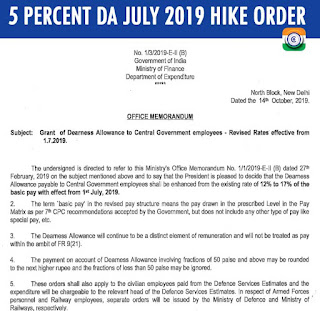7th Pay Commission faces pay gap problem
New Delhi: 7th Pay Commission faces serious challenge in submitting its recommendation to government till December for hiking salaries and allowances for central government employees as the employees’ unions test its account of controversial pay gap between top and bottom level government officials.
The previous pay commission showed a wide gap in pay between the top bureaucrats and the government employees at the bottom.
The first pay commission was recommended pay of the top bureaucrats 41 times higher than the government employees at the bottom. The top bureaucrats were given salary Rs 2,263 while the lowest earning employees got Rs 55.
Subsequent pay commissions reduced the ratio of pay between lowest earning employees and top bureaucrats from 1:41 in 1947 to about 1:12 in 2006. The minimum basic salary of central government employees is now Rs 7730 while maximum salary at the level of Secretary is Rs 80,000.
Accordingly, the 7th Pay Commission will have to consider reduction in the disparity of pay ratio between its highest and lowest paid employees because it determines the socialism view of the government and the higher number of central government employees are in the minimum pay slabs.
The pay gap increases employee’s turnover and work-related illness, with all the associated economic consequences.
The bureaucrats with high pay are generally happier, healthier and a better place to live for almost everyone in them compare to the lower earning employees.
A pay gap is calculated as the ratio of the pay of the highest paid employee of an organisation to the pay of the average or lowest paid employee in that organisation.
7th Pay Commission can make recommendations on promoting pay fairness in the central government employees’ fraternity by tackling disparities between the lowest and the highest paid central government servants.
The 7th Pay Commission, headed by Justice Ashok Kumar Mathur was appointed in February 2014 and its recommendations are scheduled to take effect from January 1, 2016.
As part of the exercise, the 7th Pay Commission holds discussions with various stakeholders, including organisations, federations, and groups representing civil employees as well as defence services.
The Commission is ready with its recommendations on revising emoluments for nearly 50 lakh central government employees and 55 lakh pensioners, and will submit report to the Finance Minister till December 31.
TST
New Delhi: 7th Pay Commission faces serious challenge in submitting its recommendation to government till December for hiking salaries and allowances for central government employees as the employees’ unions test its account of controversial pay gap between top and bottom level government officials.
The previous pay commission showed a wide gap in pay between the top bureaucrats and the government employees at the bottom.
The first pay commission was recommended pay of the top bureaucrats 41 times higher than the government employees at the bottom. The top bureaucrats were given salary Rs 2,263 while the lowest earning employees got Rs 55.
Subsequent pay commissions reduced the ratio of pay between lowest earning employees and top bureaucrats from 1:41 in 1947 to about 1:12 in 2006. The minimum basic salary of central government employees is now Rs 7730 while maximum salary at the level of Secretary is Rs 80,000.
Accordingly, the 7th Pay Commission will have to consider reduction in the disparity of pay ratio between its highest and lowest paid employees because it determines the socialism view of the government and the higher number of central government employees are in the minimum pay slabs.
The pay gap increases employee’s turnover and work-related illness, with all the associated economic consequences.
The bureaucrats with high pay are generally happier, healthier and a better place to live for almost everyone in them compare to the lower earning employees.
A pay gap is calculated as the ratio of the pay of the highest paid employee of an organisation to the pay of the average or lowest paid employee in that organisation.
7th Pay Commission can make recommendations on promoting pay fairness in the central government employees’ fraternity by tackling disparities between the lowest and the highest paid central government servants.
The 7th Pay Commission, headed by Justice Ashok Kumar Mathur was appointed in February 2014 and its recommendations are scheduled to take effect from January 1, 2016.
As part of the exercise, the 7th Pay Commission holds discussions with various stakeholders, including organisations, federations, and groups representing civil employees as well as defence services.
The Commission is ready with its recommendations on revising emoluments for nearly 50 lakh central government employees and 55 lakh pensioners, and will submit report to the Finance Minister till December 31.
TST








0 comments:
Post a Comment